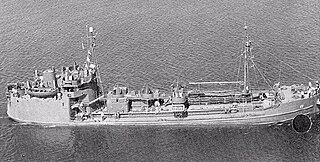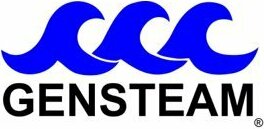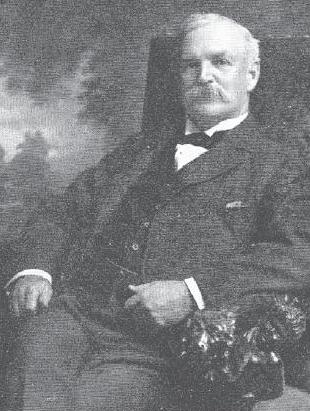
The T2 tanker, or T2, was a class of oil tanker constructed and produced in large quantities in the United States during World War II. Only the T3 tankers were larger "navy oilers" of the period. Some 533 T2s were built between 1940 and the end of 1945. They were used to transport fuel oil, diesel fuel, gasoline and sometimes black oil-crude oil. Post war many T2s remained in use; like other hastily built World War II ships pressed into peacetime service, there were safety concerns. As was found during the war, the United States Coast Guard Marine Board of Investigation in 1952 stated that in cold weather the ships were prone to metal fatigue cracking, so were "belted" with steel straps. This occurred after two T2s, Pendleton and Fort Mercer, split in two off Cape Cod within hours of each other. Pendleton's sinking is memorialized in The Finest Hours. Engineering inquiries into the problem suggested the cause was poor welding techniques. It was found the steel was not well suited for the new wartime welding construction. The high sulfur content made the steel brittle and prone to metal fatigue at lower temperatures.

The Federal Shipbuilding and Drydock Company was a United States shipyard, active from 1917 to 1948. It was founded during World War I to build ships for the United States Shipping Board. During World War II, it built ships as part of the U.S. Government's Emergency Shipbuilding program. Operated by a subsidiary of the United States Steel Corporation, the shipyard was located at Kearny Point where the mouth of the Hackensack River meets Newark Bay in the Port of New York and New Jersey. The shipyard site is now part of River Terminal, a massive distribution facility that is partially a foreign trade zone.

W. L. Steed was a steam tanker built in 1917–1918 by Bethlehem Shipbuilding Corporation of Quincy for Pan American Petroleum and Transport Company, with intention of transporting oil and petroleum products between Mexican and Gulf ports and the Northeast of the United States. The ship was briefly requisitioned by the US Government during World War I but returned to commercial service in early 1919. The ship was named after William L. Steed, superintendent of the Mexican Petroleum Company of California.

The T3 tanker, or T3, are a class of seaworthy large tanker ships produced in the United States and used to transport fuel oil, gasoline or diesel before and during World War II, the Korean War and the Vietnam War. The T3 tanker classification is still used today. The T3 tanker has a full load displacement of about 24,830 tons.
MV C.O. Stillman was an oil tanker that was built by a German shipyard in 1928 for a Canadian-based shipping company. A Panamanian subsidiary of Esso bought her at the end of 1936 and she was sunk by the German submarine U-68 in the Caribbean on June 4, 1942 about 41 nautical miles (76 km) southwest of Isla de Mona, Puerto Rico.

The T1 tanker or T1 are a class of sea worthy small tanker ships used to transport fuel oil before and during World War II, Korean War and Vietnam War. The T1 tanker classification is still in use today. T1 tankers are about 200 to 250 feet in length and are able to sustain a top speed of about 12 knots. The hull designation AO is used by the US Navy to denote the ship is a T1 oil tanker and AOG that the T1 is a gasoline tanker. The small size allows the T1 to enter just about any sea port or to anchor around a small island, this was very useful during the Pacific War. The T1 tanker can carry about 48,000 to 280,000 bbls. Some T1 tankers were used to transport goods other than oil, a few were used for black oil-crude oil, diesel, chemicals and rarely bulk cargo like grain. T1 tankers are also called liquid cargo carriers. The T1 tanker has about a 6,000 to 35,000 deadweight tonnage (DWT) of cargo. The small size also gives the ships short turn around time for repair, cleaning, loading and unloading. A T1 tanker carrying dirty cargo, like crude oil needs a few weeks of labor to clean before carrying clean cargo. Most T1 ships during World War II were named after major oil fields.

SS Oshkosh Victory was a United States Victory ship which entered service in the Pacific Ocean shortly after the end of World War II. The ship's US Maritime Commission designation was VC2-S-AP3, hull number 808 (V-808). The ship was built at the California Shipbuilding Yard (Calship) in Los Angeles, California and was delivered on September 10, 1945. SS Oshkosh Victory was the 808th of the new 10,500-ton class ships known as Victory ships. SS Oshkosh Victory was built in 96 days, under the Emergency Shipbuilding program.

SS Luxembourg Victory was a Victory ship built for the United States during World War II. She was launched by the Oregon Shipbuilding Corporation on February 28, 1944, and was completed on April 5, 1944. The ship's US Maritime Commission designation was VC2-S-AP3, hull number 90 (V-90). She was built in 101 days under the Emergency Shipbuilding program. The Maritime Commission turned her over to a civilian contractor, the Lykes Brothers SS Company, for operation until the end of World War II hostilities. She was operated under the US Merchant Marine Act for the War Shipping Administration.

The SS Rutland Victory was a Victory ship built during World War II under the Emergency Shipbuilding program. It was built and launched by the Oregon Shipbuilding Corporation on May 9, 1944, and completed on May 29, 1944. The ship's United States Maritime Commission designation was VC2-S-AP3 and hull number 104 (1020). The ship was Oregon Shipbuilding Corporation's 20th victory ship. The Maritime Commission turned it over for Merchant navy operation to a civilian contractor, the United States Lines.

SS Elmira Victory was a Victory ship built during World War II under the Emergency Shipbuilding program. It was built and launched by the Oregon Shipbuilding Corporation on May 12, 1944 and completed on May 31, 1944. The ship's United States Maritime Commission designation was VC2-S-AP3 and hull number 105 (1021). The ship was Oregon Shipbuilding Corporation's 21st victory ship. The Maritime Commission turned it over for Merchant navy operation to a civilian contractor, the Isthmian Steamship Company under the United States Merchant Marine act for the War Shipping Administration. She was named after the city of Elmira, New York.
R. W. Gallagher was a steam turbine-powered tanker built in 1938 by Bethlehem Shipbuilding Corporation of Quincy for Standard Oil Company of New Jersey with intention of operating between the oil-producing ports of the southern United States and Mexico and the Northeast. The tanker spent her entire career in coastwise trade and was torpedoed and sunk on one of regular journeys in July 1942 by German submarine U-67.

The SS Alamo Victory was the 42nd Victory ship built during World War II under the Emergency Shipbuilding program. She was launched by the California Shipbuilding Company on July 13, 1944, and completed on August 18, 1944. The ship’s United States Maritime Commission designation was VC2- S- AP3, hull number 42 (V-32), she worked as merchant marine for all of her career. SS Alamo Victory served in the Pacific Ocean during World War II and was operated by the Isthmian Steamship Company. The 10,500-ton Victory ships were designed to replace the earlier Liberty Ships. Liberty ships were designed to be used just for World War II. Victory ships were designed to last longer and serve the US Navy after the war. The Victory ship differed from a Liberty ship in that they were: faster, longer and wider, taller, had a thinner stack set farther toward the superstructure, and had a long raised forecastle.

General Steamship Company was founded in 1920 in Houston, Texas, as a Private Company, and now goes by Gensteam since 1996. General Steamship Company has a fleet of cargo ships that operate worldwide. Gensteam has a Gensteam Operations Desk website that tracks all shipping logistics. Gensteam headquarters is now in San Francisco, California. General Steamship Company was part owner of American Pacific Steamship Company in New York state and Los Angeles during and post World War II. American Pacific Steamship Company was founded in 1942 in New York City, and was previously called Los Angeles Tanker Operators Inc. which operated T2 tanker ships. During World War II the General Steamship Company and American Pacific Steamship Company were active with charter shipping with the Maritime Commission and War Shipping Administration.

World War II United States Merchant Navy was the largest civilian Navy in the world, which operated during World War II. With the United States fighting a world war in all the world oceans, the demand for cargo and fuel was very high. Cargo and fuel was needed around the world for the United States Navy, United States Army, United States Marine Corps, United States Army Air Forces, United States Coast Guard and the support of the allied nations of the United States. American steamship companies chartered ships from the Maritime Commission and War Shipping Administration to meet the demand. Many United States Merchant Marine ships were newly built in the Emergency Shipbuilding Program, other ships were older World War I ships that were put back in service, or private ships acquired under Emergency war requisitions. The Merchant Navy operated in the Pacific War and European war. Over 200 US Merchant ships took part in the D-day Normandy landings. To make a Normandy breakwater Harbor, called Mulberry harbour, 33 merchant ships were sunk 1,000 yards from shore. Some of the ghosts merchant ships used were damaged and others were deemed too old.

Deconhil Shipping Company was a shipping company founded in San Francisco, California. Deconhil Shipping Company president was Joseph J. Coney. Joseph J. Coney also had part ownership of the San Francisco tanker company Hillcone Steamship Company since 1929. Deconhil Shipping Company operated Fleet Oilers for the United States Navy to support World War II efforts. Deconhil Shipping Compan operated a fleet of tankers for the War Shipping Administration. Deconhil Shipping Compan operated Type T2 tankers and other tankers. Each War Deconhil Shipping Compan had a merchant crew of about 9 officers and 39 men. War Emergency Tankers continued operations after the war for a few years.

Keystone Shipping Company of Philadelphia, Pennsylvania is a major shipping and transportation company. Keystone Shipping Company operates a fleet of ships for both dry bulk cargo and tankers. Since World War I, the Keystone Shipping Company has been active in the worldwide support of the United States Armed Forces. Keystone Shipping Company is part of the Ready Reserve Fleet program. Keystone Shipping Company was founded by Charles Kurz. Before Keystone Shipping Company, Charles Kurz was a shipping agent, commodities trader, and ship owner. Keystone Shipping Company headquarters is in Bala Cynwyd, Pennsylvania.

Barber Asphalt Company of Washington, D.C. started in 1883 was founded by Amzi L. Barber. Barber, born in 1843. Barber first career was a teaching professor, he moved to real estate. In real estate, he found the problem of needing affordable paved roads. He found that asphalt was a great affordable material for paved roads. He added asphalt shingles to his products. In 1879 he moved Headquarters to New York City. He had offices in Washington, D.C. from 1878 to 1912, Philadelphia, Pennsylvania from 1912 to 1938 and Maurer, Perth Amboy, New Jersey from 1938 to 1948. In 1888 Barber leased the largest know asphalt deposit at Pitch Lake Trinidad. Barber opened a subsidiary, called the Iroquois division, and Iroquois Electric Refrigeration Company. Elkins Widener purchased the company in 1898 and merged with his Trinidad Corporation subsidiary. This formed the Asphalt Company of America of New York. In 1899 Asphalt Company of America was sold to John M. Mack and renamed, National Asphalt Company of America. In 1901 Barber retired from the Barber Asphalt Company. National Asphalt Company of America closed in 1902. In 1903 it opened again as General Asphalt Company. Uintah Railway Company was founded in 1903 by the Barber Asphalt Paving Company. Barber has paved millions of miles of roads. In 1904 Barber returned the company. In the 1920s Barber Asphalt Company opened a refinery in Perth Amboy, New Jersey at the time the town was known as Barber. The Barber Asphalt refinery is now the Perth Amboy Refinery. General Asphalt and Barber division merged in 1936. After the merger, the name was changed to Barber Company, Inc.. In 1938 the name was changed to Barber Asphalt Corporation. Barber Asphalt entered into a joint venture with Standard Oil Company of California in 1946. The joint venture was called California Refining Company.
American Foreign Steamship Corporation was founded in Brooklyn, New York City, in 1932 by Ira L. Rosenson, Sophia Pruss and Elias Katz. Rosenson was an attorney and the major shareholder in the firm. American Foreign Steamship Corporation purchased a 5,570-ton cargo ship SS Eastern Glen from the American South African Line in 1933. American Foreign Steamship Corporation named the ship the SS American Oriole. The ship was built by Kabushiki Kaisha Uchida Zosengo company of Yokohama, Japan, in 1920. The ship was a United States Shipping Board ship. The next two ships purchased was the SS Liberty Glo and SS Wildwood, these were Hog Islanders type ships. The two ships were purchased from the South Atlantic Steamship Company. In 1938 another Hog Islanders ship was purchased the, SS Magmeric, renamed the SS American Robin. The American Oriole was sold to England in 1940 to help with the World War II efforts. She was renamed the SS Barberrys, but on November 26, 1942, she was sunk by a torpedoed from German submarine U-663 off of St. John's, Newfoundland.

Sieling & Jarvis Inc. was a shipping company that operated tanker ships and some cargo ships. Sieling & Jarvis was started by David B. Jarvis and Dick Sieling in New York City. Later David B. Jarvis was the company president and later became the sole owner of Sieling & Jarvis Inc. Mr. Sieling was the vice president and a partner in Sieling & Jarvis. Sieling & Jarvis supported the World War II effort by operating United States owned ships.
















